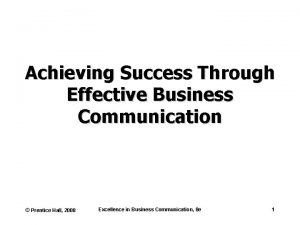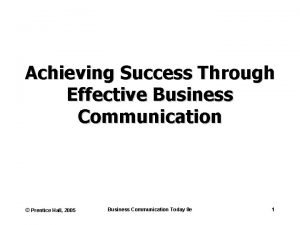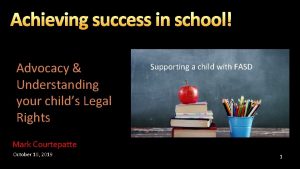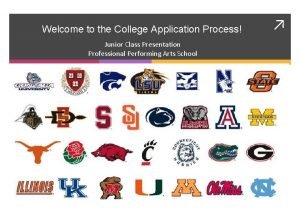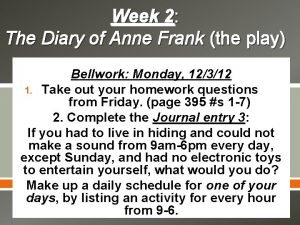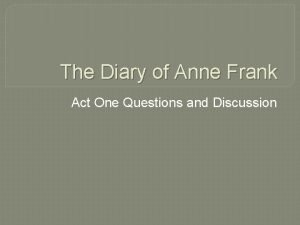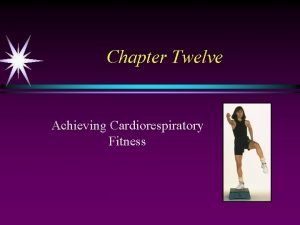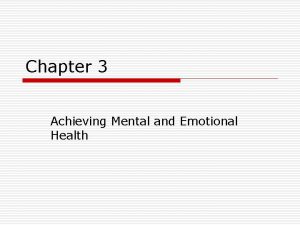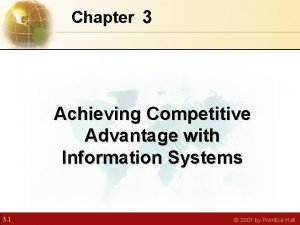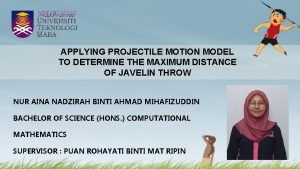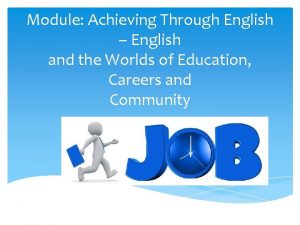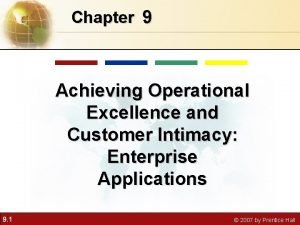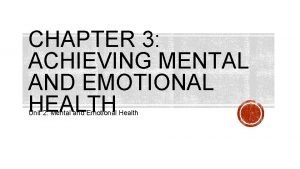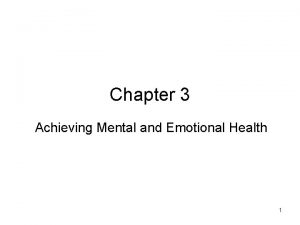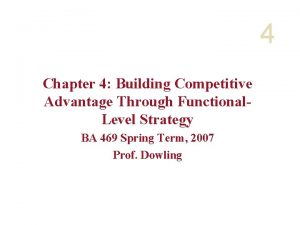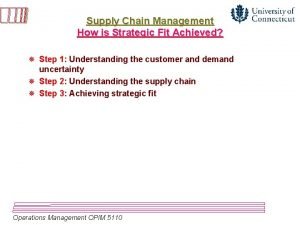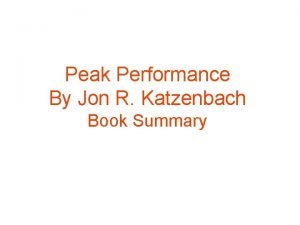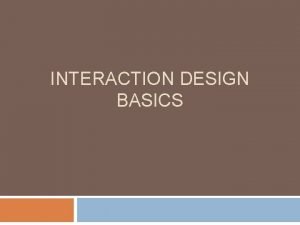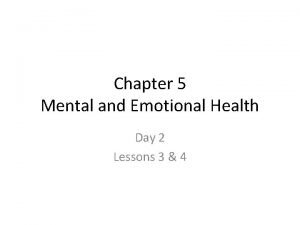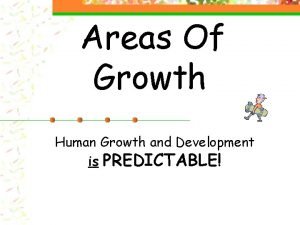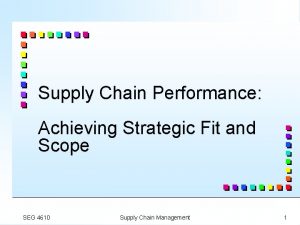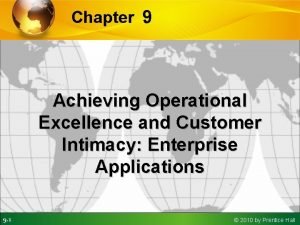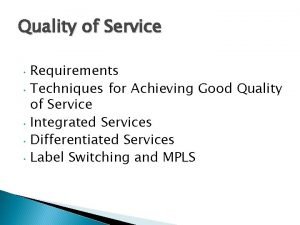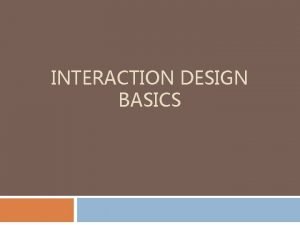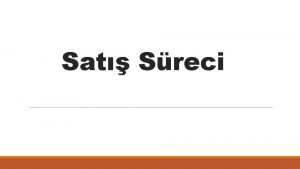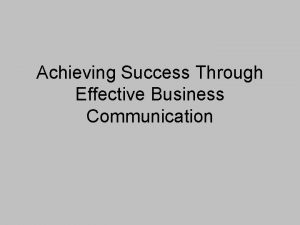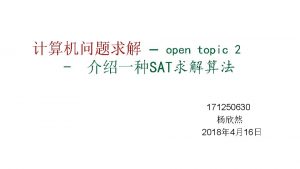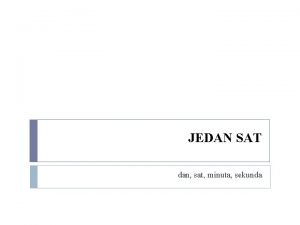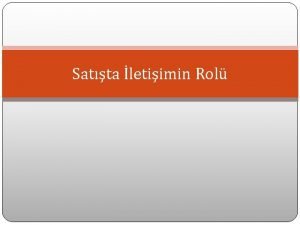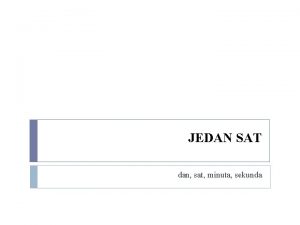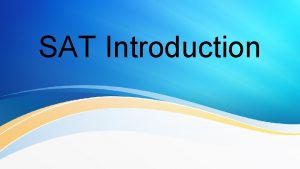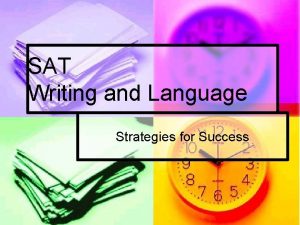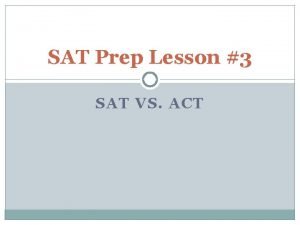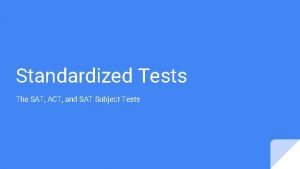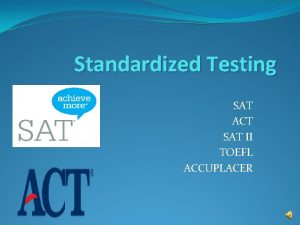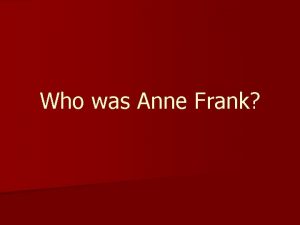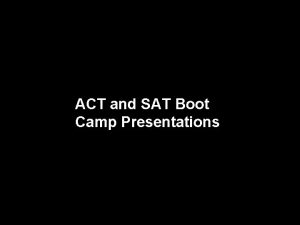Achieving Success on the SAT ACT Frank Mc



































- Slides: 35

Achieving Success on the SAT & ACT Frank Mc. Williams Vice President, Method Test Prep frank@methodtestprep. com 281 -525 -6465

What is MTP Made Of ? • Passion – Every student should have access to highlevel prep • Knowledge – Our team of tutors take the tests regularly • Experience – SAT & ACT experts for 17 years and counting

A Smart Timeline for Prep SAT ACT • Start prepping this summer • PSAT in October. First exam: Nov, Dec, or March • Ideal first exam: Dec • Test Information Release (TIR) • Question-Answer Service (QAS) – May – October – December? – December – April – June

Part I The SAT

SAT – Reading • Content Areas – – – No sentence completions! Reading comprehension (passages & questions) Integrated graphics & data interpretation questions Evidence questions Vocab in context • Structure & Scoring – 1 section – 65 min (60 min PSAT) – Score range 10 -40 (will combine with Writing & Language to create a score from 200 -800)

Question Type – Main Idea • Use key phrases – “Main purpose”; “Main idea”; “Primarily serves to” – Bottom line: “What’s the point? ” • Flaw in student approach: letting the answers drive thought process – Instead, go back, read reference lines, try to derive your own idea before looking at choices; then align own answer to choices • Answers always contain distractors that seem relevant, but don’t actually answer question

Question Type – Evidence • New to the SAT • Always used as a follow-up question • Potential for “double-whammy” incorrect answer pattern • Many of the answers to the evidence question will be relevant to the idea in question: only one will support the idea specifically • Great technique: anticipate the best evidence yourself; if you don’t see it there, your first answer may be incorrect!

Question Type – Words in Context • Will now focus on simple, common words that can take on many different meanings • Common flaws in student approach: (1) assuming a word is used as it “always” is, (2) not reading far enough around or considering local & global main idea • Here, student could use phrases around the word (she “recalled” her past kindness) and use main idea of passage (that Emma & Miss Taylor had been separated) • More frequent – will now constitute about 20% of Reading test questions

Question Type – Data Integration • New to SAT • Will pair a relevant graph, table, or chart with the passage • Students will have to integrate terms and references in the passage with visual information to reach a conclusion • Common student errors: careless reading of axes; incorrect “extension” of an idea to incorporate unsubstantiated claim • Will constitute about 5% of Reading test questions

SAT – Writing & Language • Content Areas – – – Improving sentences Finding errors Improving passages Structure, punctuation, rhetorical skills All passage-based Graphics integration • Structure & Scoring – 1 section – 35 min – Score range 10 -40 (will combine with Reading to create a score from 200 -800) • A near clone of the ACT English section

Format for the Section Choice C is the best answer because it states the situation succinctly and is free of redundancies. Choices A, B, and D are incorrect because all three contain a redundancy in which a reference to the annual nature of the loss is stated twice; for example, Choice A states “yearly” and “annually. ”

An Example: “Red Flag” Words Where’s the error? The congressional panel issued their findings after conducting an investigation that lasted for over a year. The congressional panel issued their findings The congressional panel issued its findings

Plus Data • Will also integrate data, whose interpretation can alter the sentence

Writing & Language Pitfalls • #1 most common mistake: not reading enough around the underlined portion – Get fuller context – Re-read the sentence in full with your choice before moving on – For rhetorical (placement, relevance, etc. ) errors, students may have to read several sentences or may even have to re-read paragraphs • Not understanding the subject – Distinguish “red flag words” using MTP’s program • • Pronouns Conjugations of “to be” – Highlight prepositional phrases • Not actually giving the question “what it wants” – Don’t simply pick what “sounds good”

SAT – Math • Content Areas – – – – Algebra (emphasis here) Geometry (much less) Algebra II (more of it) Data & statistics (more of it) Trigonometry (a little) Extended thinking Multiple choice & grid-in • Structure & Scoring – 2 sections • No-Calculator – 25 min • Calculator – 55 min (45 PSAT) – Score range: 200 -800

Algebra to the Max • MAJOR emphasis on – Constructing algebraic expressions based on statements – Algebraic manipulation • Factoring • Solving in terms of multiple variables – Solving multivariable equations • Systems • “Break-even” and “Two-Variable” problems From No-Calculator section – guess & check method would be too burdensome for most Basic algebraic skills are often weak

Understanding Linear Relationships • MAJOR emphasis on – Interpreting slope & y-intercept terms in context • As opposed to simply “find the slope/find the yintercept” – Constructing linear equations based on relationships • As opposed to just “plug & chug” – Interpreting models in real-world contexts

Basic and Intermediate Statistics Interpretation • MAJOR emphasis on – Graph reading & information gathering from charts – Understanding line of best fit

Quadratics • Significant Emphasis on Quadratics – Understanding algebraic and graphical relationship between standard form, factors, and roots – Graphs of polynomial functions – Will be mostly more difficult questions

Mathematics Suggestions • Redouble efforts to bolster your basic and intermediate algebra skills – “Algebraic gymnastics” • You should be comfortable reading two-way tables and graphical figures • Emphasize proportional reasoning – Will be useful for linear relationships and converting • Know your mean, median, and standard deviation – E. g. , how manipulating the data can or can’t change the mean; working with weighted averages; frequency histograms

SAT – Evidence-Based Writing • Formulate arguments based on a provided document • No more “making things up” • Essay Structure & Scoring – 50 min – 3 sub-scores graded on 0 -8 scale • Suggestion: consider elements of persuasion prior to test – Language choice, rhetorical style, irony, sarcasm, appeal to emotion, logic, etc.

Part II The ACT

ACT Overview English 75 questions 45 minutes Math 60 questions 60 minutes Reading 40 questions 35 minutes Science 40 questions 35 minutes • Questions more straightforward • English is the same as SAT Writing & Language section • Pace is a huge factor • Science isn’t really “science” – it’s glorified reading comprehension with charts and graphs • All section scores out of 36; averaged for composite out of 36 • Optional Essay at end of test – 40 min, response integrating perspectives; graded out of 12, but does not affect the composite score

Math – Some More Stats and Probability • There has been a slight increase in the proportion of basic statistics and probability questions – Mean, median, mode, range, basic probability of events • Greater emphasis on “STEM”related problems more likely to be encountered in college • Still a majority emphasis on algebra I and II and geometry • Questions more straightforward than SAT math questions

Reading – Paired Passages • Through 2013, Reading test featured 4 passages with 10 questions each, to be completed in 35 min • One of the four passages now is “paired” • Questions apply to one or the other passage, or both • Hasn’t significantly increased difficulty – aligns with SAT Reading • Questions concern main idea, vocab in context, inference, details

Science – 7 to 6 Passages… …and Back Again • Through 2015, Science always featured 7 passages • On February 2015 exam, there were only 6 passages (same total # of questions) • Each subsequent exam featured 6 passages until… • …December 2015, on which there were 7 again! • Greater prevalence of “experimental procedure” questions, but overall, there is lots of graph and chart interpretation

ACT – Essay • The “New” ACT Essay is not that much different from the old one – 40 minutes now • Pick a side (just like the old one), but address each of the positions as it aligns with/conflicts with your position • Now on 1– 12 scale

Part III A Logical Prep Timeline and How to Prepare

A Smart Timeline for Prep SAT ACT • Start prepping this summer • PSAT in October. First exam: Nov, Dec, or March • Ideal first exam: Dec • Test Information Release (TIR) • Question-Answer Service (QAS) – – Cost $18 October March May – – Cost $20 December April June

Prep Suggestions • Practice early and often by taking timed sections • Take full-length practice tests • Find a comprehensive prep resource • Know that just a few questions can make a huge difference

MTP Online • Complete SAT and ACT courses • Lessons, quizzes, audio/video explanations, vocab builder • Go at your own pace, access from anywhere with internet • FREE to ALL CCISD students grade 9 -12

A Structured Checklist of Tasks

Rich, Engaging Lessons

Instant-Feedback Quizzes

Even More Features! • Full-length exams • Concept summary reports – highlight strengths and weaknesses • Quiz on-demand • Vocabulary Builder
 The role of project management in achieving project success
The role of project management in achieving project success Competing messages communication barriers
Competing messages communication barriers Achieving success through effective business communication
Achieving success through effective business communication Your child's success or lack of success
Your child's success or lack of success Your child's success or lack of success
Your child's success or lack of success Frank william abagnale sr
Frank william abagnale sr Act 1 act 2 act 3
Act 1 act 2 act 3 Sat and act
Sat and act The diary of anne frank act 1 scene 4
The diary of anne frank act 1 scene 4 Anne frank act 1 scene 1 questions
Anne frank act 1 scene 1 questions Diary of anne frank act 2 test
Diary of anne frank act 2 test Chapter 3 lesson 3 expressing emotions in healthful ways
Chapter 3 lesson 3 expressing emotions in healthful ways Achieving cardiorespiratory fitness can
Achieving cardiorespiratory fitness can Chapter 3 achieving mental and emotional health
Chapter 3 achieving mental and emotional health Achieving competitive advantage with information systems
Achieving competitive advantage with information systems Chapter 13 achieving energy sustainability
Chapter 13 achieving energy sustainability Javelin throw way in achieving projectile motion
Javelin throw way in achieving projectile motion Achieving the dream
Achieving the dream Chapter 3 achieving mental and emotional health
Chapter 3 achieving mental and emotional health Achieving through english
Achieving through english Achieving operational excellence and customer intimacy
Achieving operational excellence and customer intimacy Achieving mental and emotional health
Achieving mental and emotional health Chapter 3 achieving mental and emotional health
Chapter 3 achieving mental and emotional health Superior efficiency meaning
Superior efficiency meaning Product -market fit is achieved when
Product -market fit is achieved when Achieving peak performance summary
Achieving peak performance summary Skill of questioning in microteaching with examples
Skill of questioning in microteaching with examples Design is achieving goals within constraints
Design is achieving goals within constraints Emotional health defintion
Emotional health defintion Achieving mental and emotional health
Achieving mental and emotional health Achieving masculine or feminine social role
Achieving masculine or feminine social role Zone of strategic fit in supply chain
Zone of strategic fit in supply chain Achieving operational excellence and customer intimacy
Achieving operational excellence and customer intimacy Randy pausch childhood dreams
Randy pausch childhood dreams Techniques for achieving good quality of service
Techniques for achieving good quality of service Design is achieving goals within constraints
Design is achieving goals within constraints

